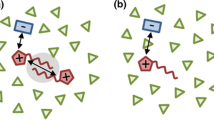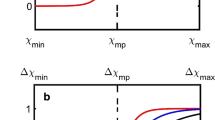Abstract
An important property of ionic liquids consisting of cations and anions is that the chemical structures can be easily tuned. To expand the repertoire of effective ionic liquid-based refolding additives, we focused on this tunable property and investigated the effects of new candidates such as N-alkylpyridinium chlorides and N-alkyl-N-methylpyrrolidinium chlorides on protein refolding. Denatured lysozyme (30 mg/mL) was used as a model protein and refolded by 30-fold dilution with various refolding buffers containing different ionic liquids consisting of a systematic variety of alkyl chains. Compared with the refolding yield without additives (lower than 10%), less hydrophobic ionic liquids such as N-ethyl, N-butyl and N-hexylpyridinium chlorides, and N-butyl-N-methylpyrrolidinium chloride were effective in enhancing the refolding yields (46–69%), because they primarily suppressed aggregation because of their chaotropic properties. N-alkylpyridinium cations were more hydrophobic than N-alkyl-N-methylpyrrolidinium cations according to the calculated log P values and prevented aggregation at lower concentrations because of their hydrophobicity. The results provide a range of new effective ionic liquid-based additives for higher protein refolding yields and the knowledge of the effect of chemical structures of additives on protein refolding.





Similar content being viewed by others
References
Baneyx, F. (1999). Recombinant protein expression in Escherichia coli. Current Opinion in Biotechnology, 10, 411–421.
Baneyx, F., & Mujacic, M. (2004). Recombinant protein folding and misfolding in Escherichia coli. Nature Biotechnology, 22, 1399–1408.
Singh, S. M., & Panda, A. K. (2005). Solubilization and refolding of bacterial inclusion body proteins. Journal of Bioscience and Bioengineering, 99, 303–310.
Jungbauer, A., & Kaar, W. (2007). Current status of technical protein refolding. Journal of Biotechnology, 128, 587–596.
Goldberg, M. E., Rudolph, R., & Jaenicke, R. (1991). A kinetic study of the competition between renaturation and aggregation during the refolding of denatured-reduced egg white lysozyme. Biochemistry, 30, 2790–2797.
Clark, E. D. (2001). Protein refolding for industrial processes. Current Opinion in Biotechnology, 12, 202–207.
Hevehan, D. L., & Clark, E. D. (1997). Oxidative renaturation of lysozyme at high concentrations. Biotechnology and Bioengineering, 54, 221–230.
Yasuda, M., Murakami, Y., Sowa, A., Ogino, H., & Ishikawa, H. (1998). Effect of additives on refolding of a denatured protein. Biotechnology Progress, 14, 601–606.
Raman, B., Ramakrishna, T., & Rao, C. M. (1996). Refolding of denatured and denatured/reduced lysozyme at high concentrations. The Journal of Biological Chemistry, 271, 17067–17072.
Wetlaufer, D. B., & Xie, Y. (1995). Control of aggregation in protein refolding: a variety of surfactants promote renaturation of carbonic anhydrase II. Protein Science, 4, 1535–1543.
Bam, N. B., Cleland, J. L., & Randolph, T. W. (1996). Molten globule intermediate of recombinant human growth hormone: Stabilization with surfactants. Biotechnology Progress, 12, 801–809.
Orsini, G., & Goldberg, M. E. (1978). Renaturation of reduced chymotrypsinogen-a in guanidine Hcl-Refolding versus aggregation. The Journal of Biological Chemistry, 253, 3453–3458.
Dong, X. Y., Shi, J. H., & Sun, Y. (2002). Cooperative effect of artificial chaperones and guanidinium chloride on lysozyme renaturation at high concentrations. Biotechnology Progress, 18, 663–665.
Tsumoto, K., Umetsu, M., Kumagai, I., Ejima, D., Philo, J. S., & Arakawa, T. (2004). Role of arginine in protein refolding, solubilization, and purification. Biotechnology Progress, 20, 1301–1308.
Hamada, H., & Shiraki, K. (2007). L-argininamide improves the refolding more effectively than l-arginine. Journal of Biotechnology, 130, 153–160.
Buchfink, R., Tischer, A., Patil, G., Rudolph, R., & Lange, C. (2010). Ionic liquids as refolding additives: Variation of the anion. Journal of Biotechnology, 150, 64–72.
Summers, C. A., & Flowers, R. A., 2nd. (2000). Protein renaturation by the liquid organic salt ethylammonium nitrate. Protein Science, 9, 2001–2008.
Lange, C., Patil, G., & Rudolph, R. (2005). Ionic liquids as refolding additives: N′-alkyl and N′-(omega-hydroxyalkyl) N-methylimidazolium chlorides. Protein Science, 14, 2693–2701.
Yamaguchi, S., Yamamoto, E., Tsukiji, S., & Nagamune, T. (2008). Successful control of aggregation and folding rates during refolding of denatured lysozyme by adding N-methylimidazolium cations with various N′-substituents. Biotechnology Progress, 24, 402–408.
Saxena, V. P., & Wetlaufer, D. B. (1970). Formation of three-dimensional structure in proteins. I. Rapid nonenzymic reactivation of reduced lysozyme. Biochemistry, 9, 5015–5023.
Reddy, R. C., Lilie, H., Rudolph, R., & Lange, C. (2005). l-Arginine increases the solubility of unfolded species of hen egg white lysozyme. Protein Science, 14, 929–935.
Kolkenbrock, S., Parschat, K., Beermann, B., Hinz, H. J., & Fetzner, S. (2006). N-acetylanthranilate amidase from Arthrobacter nitroguajacolicus Ru61a, an alpha/beta-hydrolase-fold protein active towards aryl-acylamides and -esters, and properties of its cysteine-deficient variant. Journal of Bacteriology, 188, 8430–8440.
Clark, E. D., Hevehan, D., Szela, S., & Maachupalli-Reddy, J. (1998). Oxidative renaturation of hen egg-white lysozyme. Folding vs aggregation. Biotechnology Progress, 14, 47–54.
MaachupalliReddy, J., Kelley, B. D., & Clark, E. D. (1997). Effect of inclusion body contaminants on the oxidative renaturation of hen egg white lysozyme. Biotechnology Progress, 13, 144–150.
Dong, X. Y., Huang, Y., & Sun, Y. (2004). Refolding kinetics of denatured-reduced lysozyme in the presence of folding aids. Journal of Biotechnology, 114, 135–142.
Wetzel, R., Perry, L. J., Baase, W. A., & Becktel, W. J. (1988). Disulfide bonds and thermal stability in T4 lysozyme. Proceedings of the National Academy of Sciences of the United States of America, 85, 401–405.
Matsuoka, T., Tomita, S., Hamada, H., & Shiraki, K. (2007). Amidated amino acids are prominent additives for preventing heat-induced aggregation of lysozyme. Journal of Bioscience and Bioengineering, 103, 440–443.
Zhao, H., Olubajo, O., Song, Z. Y., Sims, A. L., Person, T. E., Lawal, R. A., et al. (2006). Effect of kosmotropicity of ionic liquids on the enzyme stability in aqueous solutions. Bioorganic Chemistry, 34, 15–25.
Zhao, H., Campbell, S. M., Jackson, L., Song, Z. Y., & Olubajo, O. (2006). Hofmeister series of ionic liquids: Kosmotropic effect of ionic liquids on the enzymatic hydrolysis of enantiomeric phenylalanine methyl ester. Tetrahedron Asymmetry, 17, 377–383.
Zhao, H. (2005). Effect of ions and other compatible solutes on enzyme activity, and its implication for biocatalysis using ionic liquids. Journal of Molecular Catalysis. B, Enzymatic, 37, 16–25.
Broering, J. M., & Bommarius, A. S. (2005). Evaluation of Hofmeister effects on the kinetic stability of proteins. The Journal of Physical Chemistry. B, 109, 20612–20619.
Zhao, H. (2006). Are ionic liquids kosmotropic or chaotropic? An evaluation of available thermodynamic parameters for quantifying the ion kosmotropicity of ionic liquids. Journal of Chemical Technology and Biotechnology, 81, 877–891.
Wang, J., Lu, D., Lin, Y., & Liu, Z. (2005). How CTAB assists the refolding of native and recombinant lysozyme. Biochemical Engineering Journal, 24, 269–277.
Yamamoto, E., Yamaguchi, S., & Nagamune, T. (2011). Synergistic effects of detergents and organic solvents on protein refolding: Control of aggregation and folding rates. Journal of Bioscience and Bioengineering, 111, 10–15.
Acknowledgments
We thank Prof. Kouhei Tsumoto and Dr. Motonori Kudou for providing us with the opportunity to do DSC measurements. This work was supported in part by a Grant-in-Aid for Young Scientists (B) from the MEXT of Japan.
Author information
Authors and Affiliations
Corresponding authors
Electronic supplementary material
Below is the link to the electronic supplementary material.
ESM 1
DOC 533 kb
Rights and permissions
About this article
Cite this article
Yamamoto, E., Yamaguchi, S. & Nagamune, T. Protein Refolding by N-Alkylpyridinium and N-Alkyl-N-methylpyrrolidinium Ionic Liquids. Appl Biochem Biotechnol 164, 957–967 (2011). https://doi.org/10.1007/s12010-011-9187-1
Received:
Accepted:
Published:
Issue Date:
DOI: https://doi.org/10.1007/s12010-011-9187-1




